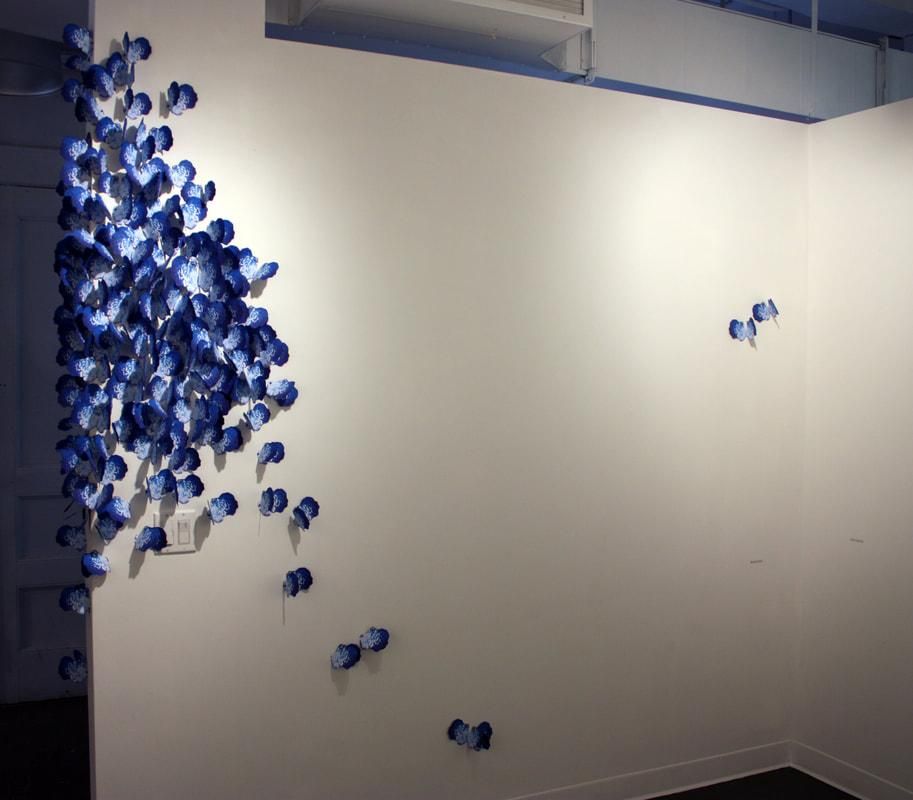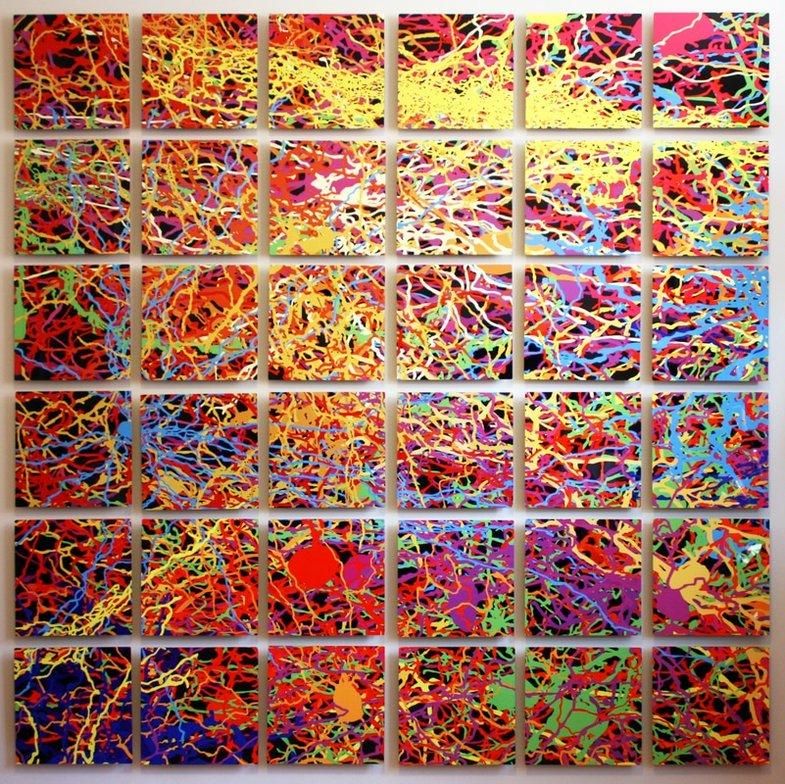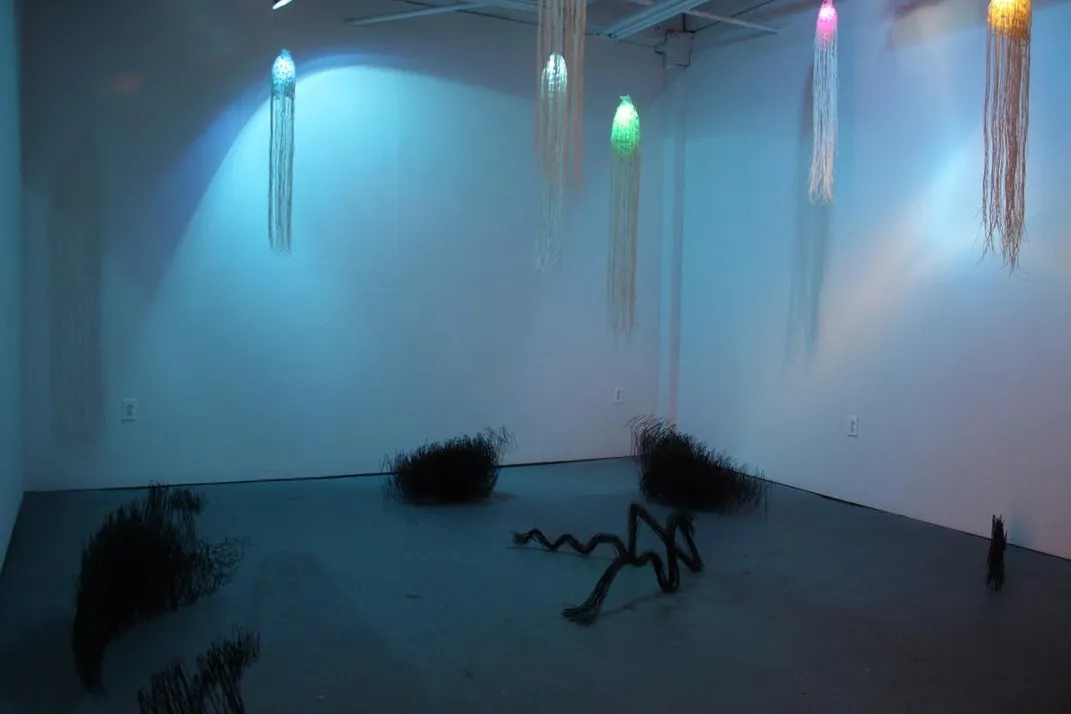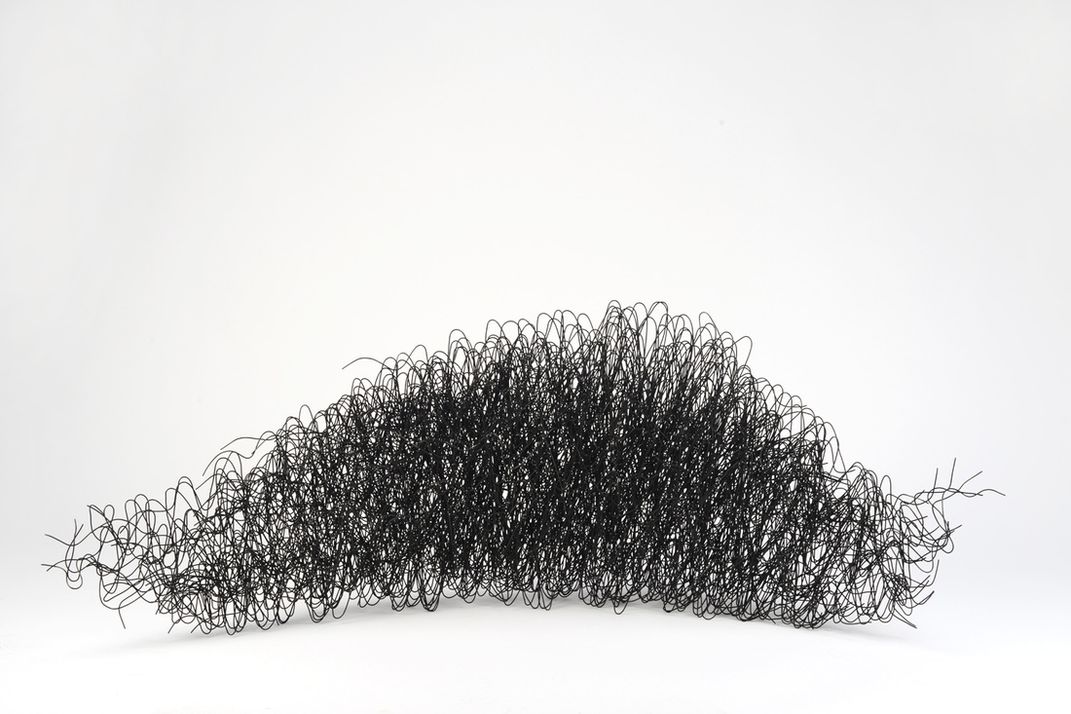This Sculptor Imagines Brain Waves in 3-D
Julia Buntaine Hoel depicts the electrical activity of the brain in Wave(s), on display at Smithsonian’s “The Long Conversation”
:focal(10x335:11x336)/https://tf-cmsv2-smithsonianmag-media.s3.amazonaws.com/filer/14/ba/14bae732-ed10-4e19-b664-6df9a2d4ae6a/delta_wave.jpg)
Brain waves are normally the stuff of beeping hospital machines, but this Friday, they’ll be on display at the Smithsonian’s Arts and Industries Building. Artist Julia Buntaine Hoel, whose work exists at the intersection of science and art, has handcrafted thickets of black wire—sculptures aptly named Alpha, Beta, Delta, Gamma and Theta Wave(s)—that imagine the varying electrical activity of the brain in 3-D form.
Hoel was an artist long before science piqued her interest. She attended an arts high school in Natick, Massachusetts, but while at Hampshire College, she enrolled in a Neuroscience 101 course and was hooked. After that, Hoel spent time “running from the lab to the studio,” studying both neuroscience and sculpture. All of that knowledge about brain regions and neurotransmitters has spilled over into the Cambridge, Massachusetts-based artist’s work ever since. She’s arranged images of brain cortex slices like a swarm of cobalt butterflies, painted a topographical model of the New York City skyline with an overlay of a brain activity scan, and made a gif that displays a month of frontal lobe activation.


The discipline-bending nature of Hoel’s work makes her a natural fit for "The Long Conversation," a free event on December 7 that puts boundary-pushing thinkers—a NASA astrophysicist, late night comedian, Smithsonian curator and RuPaul’s Drag Race champion, just to name a few—in dialogue with each other about innovation and the future. Hosted in the generally-closed-to-the-public Arts and Industries Building (which has its own claim to innovation fame—it housed items from the first world fair held in the U.S., which showcased inventions like an early monorail), "The Long Conversation" also gives occasion for an exhibition of forward-thinking artwork. In the company of Hoel’s, there will be a 15-foot kinetic light sculpture by Jenn Figg and Matthew McCormack, a painting and sculptures by Phaan Howng imagining a post-human Earth, and artist Gabriel Mellan’s “selfie booth for the future.”

Wave(s), Hoel’s installation, originated in 2013 out of a desire to work with wire. In depicting the electrical activity of the brain, which usually is monitored via an electroencephalogram, “I wanted to give a physical presence to something which is normally digital and is normally locked behind a laboratory door,” Hoel explains. First, she researched, poring over textbooks she’d saved from college and finding diagrams of five different frequencies of brain waves (the frequencies correspond with separate mental states, from the deep sleep of delta waves to the quickly zigzagging beta waves that signify normal waking awareness). She started with high-frequency gamma oscillations, and, using gloves and pliers, bent black oil-coated steel rebar into a squiggle that matched her reference diagram. Once she’d made a template, it was a grab-and-repeat process—Hoel ultimately created around 1,000 gamma-wave wires for a set of two Gamma Wave(s) sculptures. As she made them, she interwove them, holding the cluster of wire together entirely through tension. It took several years of intermittent work to complete the entire set of black floor sculptures, some spiky and bush-like, others sleek undulations. Now, five years after Hoel began coaxing the rebar into brain wave patterns, the black oil coating the rebar has given way to rust in places, lending the pieces an unexpected new dimension.


Hoel’s interdisciplinary work fits into a niche called SciArt—a convergence of the artistic and scientific community has boomed in the past five to ten years, she says. And Hoel would know; she’s the founder of SciArt Magazine and the director of SciArt Center, an organization that co-hosts discipline-spanning pop-up events, offers grants and pairs artists with scientific collaborators in a virtual residency program. The umbrella of SciArt allows the two worlds to come together in a mutually beneficial way, says Hoel: “For artists, science is a wealth of information and a wealth of inspiration. And artists, in turn, can share science with the public.” SciArt also hinges on recognizing the similarities between the two professions. Contrary to stereotypes that paint artists as unpredictable creatives and scientists as relentlessly logical and rigid, she says, “creativity is necessary” for both callings.
Yes, painters and microbiologists might use different tools and operate from distinct points of view, but, as Hoel puts it, “Artists and scientists essentially ask the same questions about what it means to be a human being.”
Watch “The Long Conversation” on livestream here, beginning at 2 p.m. on December 7, 2018.